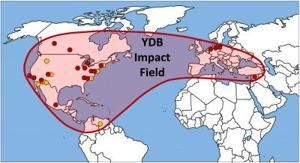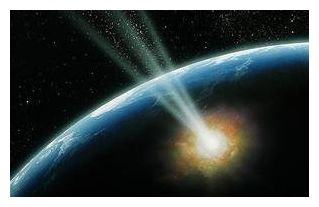Roughly 13,000 years ago, something touched off the 'Big Freeze' - a 1,300-year-long cold snap formally called the Younger Dryas stadial - that caused major climate changes and droughts.
These have been blamed for the extinction of the mammoth and the saber-toothed tiger, and also the downfall of the ancient Clovis culture. However, what that something was has been debated for years.
One idea that's proven popular over the years is that a meteorite or comet struck the planet, somewhere around what is now Hudson Bay. However, if something big enough to melt the Laurentide ice sheet had hit the planet there should have been some indication of it, in the form of a crater, or shocked and melted rocks, or 'impact spherules'. And, until recently, the evidence was lacking.

That might have been the end of it but, in a further twist just last week, another team - this time a group of 28 researchers from Britain, the Czech Republic, Mexico, the Netherlands and the United States - published a study discussing the results of their analysis of roughly 700 microspherules gathered from 18 sites around the world, including the property of Anton and Maria Chobot.
The Chobots uncovered numerous Clovis artifacts over the years, all from a layer of black, carbon-rich soil called the Younger Dryas Boundary (YDB). This layer has been found in excavation sites around the world and is thought to be the result of widespread fires caused by an impact from space. This is the layer of soil that also contained the impact spherules, along with other 'unusual materials' like nanodiamonds and iridium. A detailed examination of the spherules showed that they could only have formed under extremely high temperatures (above 2,200 degrees Celsius), and the structure and magnetism of the spherules ruled out volcanoes or lightning as possible origins.
Anton and Maria Chobot are already immortalized in the 2006 book The Cycle of Cosmic Catastrophes: How a Stone-Age Comet Changed the Course of World Culture, written by two of the study's authors, Richard Firestone and Allen West. But the couple's retirement activities may have helped solve one of the biggest scientific mysteries around. It just goes to show that it's never too late to take an interest in science, and, even in retirement, you can still contribute and become famous for your efforts!
Source: Yahoo! News




Reader Comments
to our Newsletter